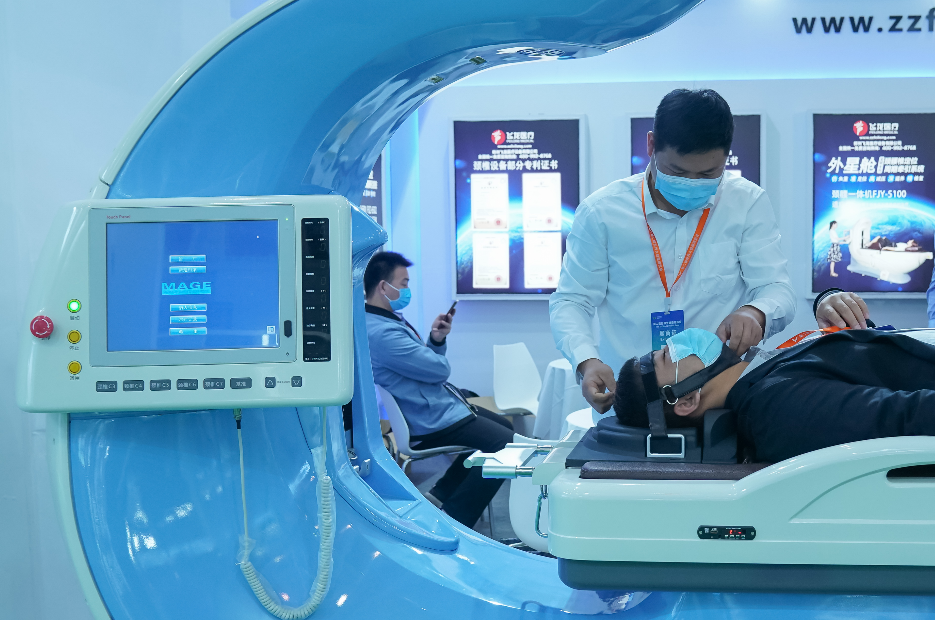
An exhibitor operates medical equipment displayed during the Second World Health Expo held in Wuhan, capital city of central China's Hubei Province, Nov. 11, 2020. (Xinhua/Cheng Min)
BEIJING, June 30 (Xinhua) -- China's medical aesthetics market has seen robust demand from young consumers, implying huge investment opportunities, the Xinhua-run Economic Information Daily reported on Wednesday.
In recent years, the country's medical aesthetics market has developed rapidly. According to Galaxy Securities, China's medical aesthetics consumer population reached 15.2 million in 2020, a year-on-year increase of 35.7 percent.
Compared with European and American medical aesthetics market where the demand is concentrated mainly in women over 35 years old, women aged 20 to 25 in China accounted for nearly 40 percent and those aged 26 to 30 accounted for 23 percent, showing the younger trend, said Galaxy Securities.
The younger customer base has driven the expected scale of the medical aesthetics market, said Yang Xiaotong, an analyst of Galaxy Securities, expecting the domestic medical aesthetics market to maintain a compound annual growth rate of about 20 percent in the short term.
From the perspective of the types of medical aesthetics projects, the current surgical aesthetics projects account for more than 50 percent of the entire medical aesthetics market, but the growth rate of non-surgical aesthetics projects exceeds that of surgical projects.
Industry insiders predict that by 2022, market size of non-surgical aesthetics projects will surpass that of surgical projects, benefiting the subdivisions such as hyaluronic acid, botulinum toxin and other pharmaceuticals and equipment.
From the perspective of the industry structure, the upstream equipment and pharmaceutical industries are highly concentrated. Taking hyaluronic acid enterprises as an example, the leading enterprises can have a gross profit margin of close to 80 percent. However, in the downstream medical and aesthetic institutions, the situation varies and the competition is fierce.
Data shows that the average profit margin of the downstream medical aesthetics institutions is between 1 percent and 10 percent.
"At present, more than 80 percent of medical aesthetics institutions are privately owned, and most of them are clinics with uneven service levels," said Ye Faming, secretary general of the Jiangsu Association of Plastics and Aesthetics.
Some industry insiders believe that the small and fragmented downstream market also contains huge development opportunities.
According to a CICC research report, the establishment of training mechanisms and the standardization of management processes will become the top priorities for the downstream institutions to stand out. (Edited by Hu Pingchao with Xinhua Silk Road, hupingchao@xinhua.org)




 A single purchase
A single purchase









